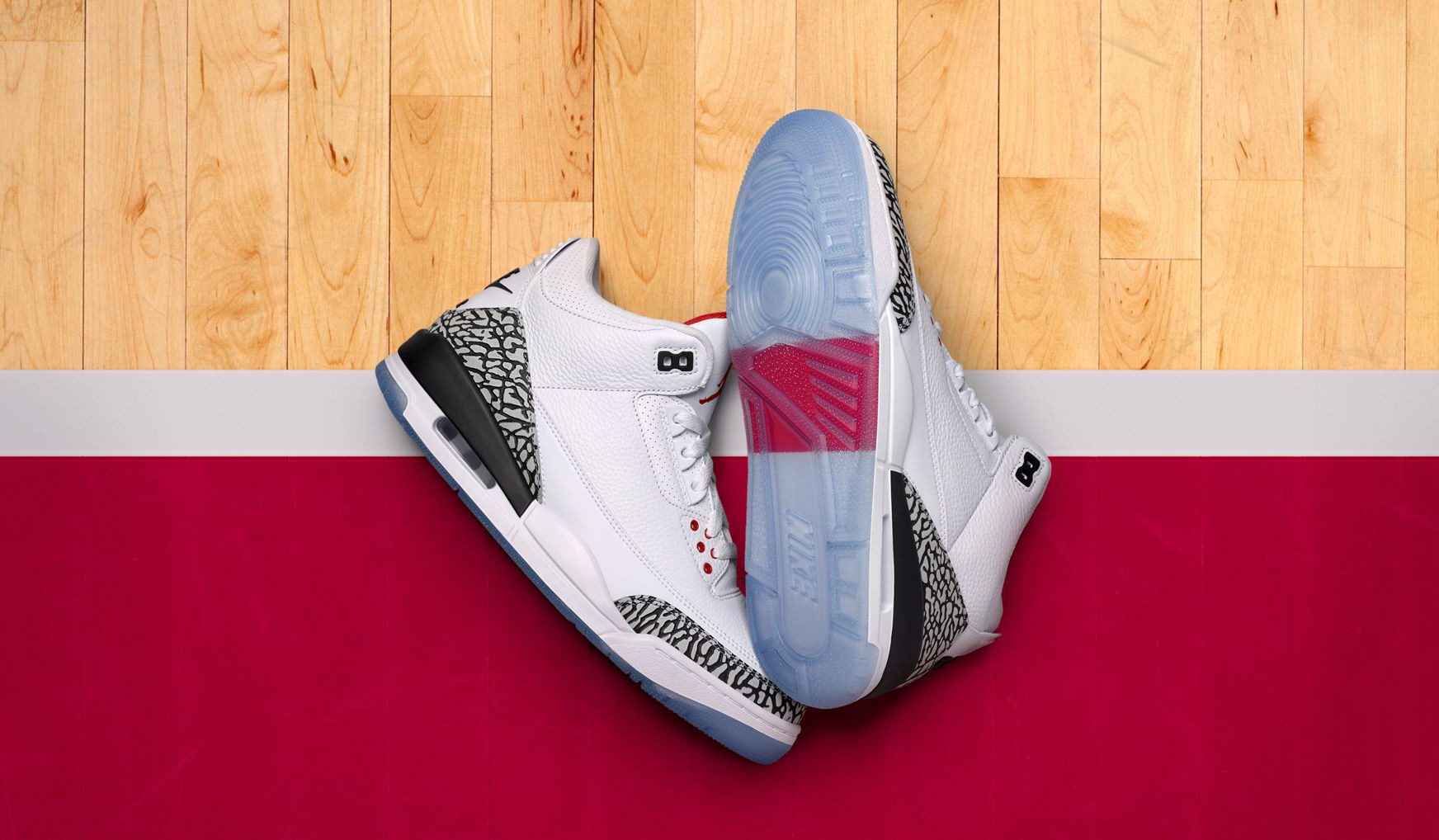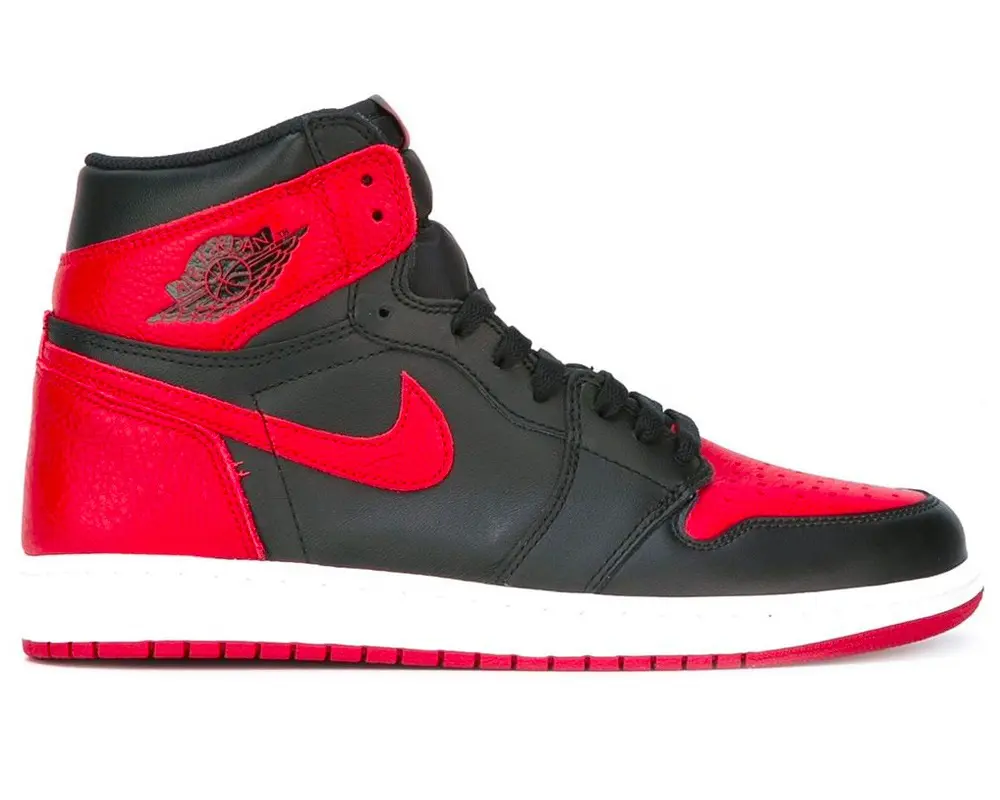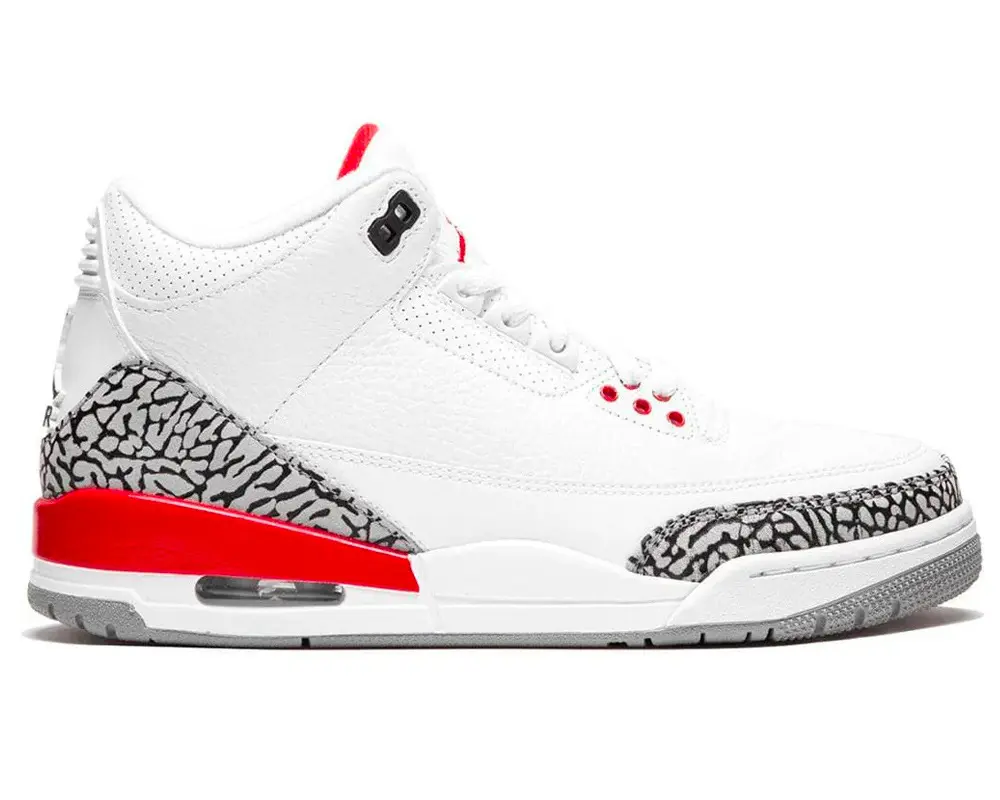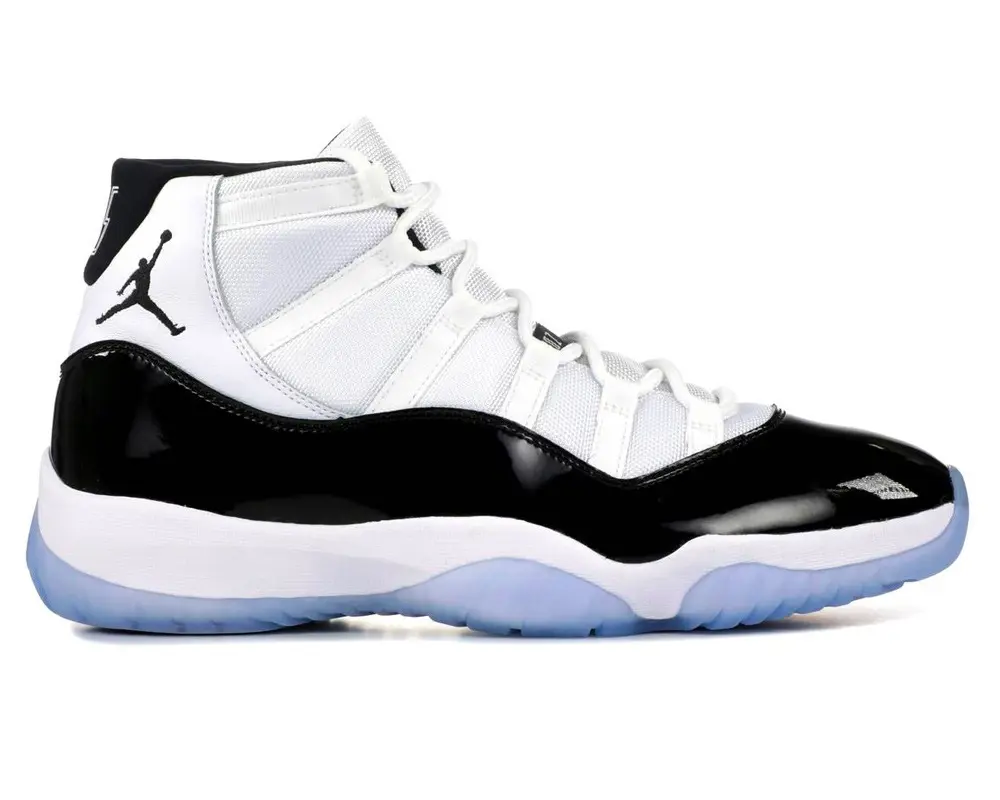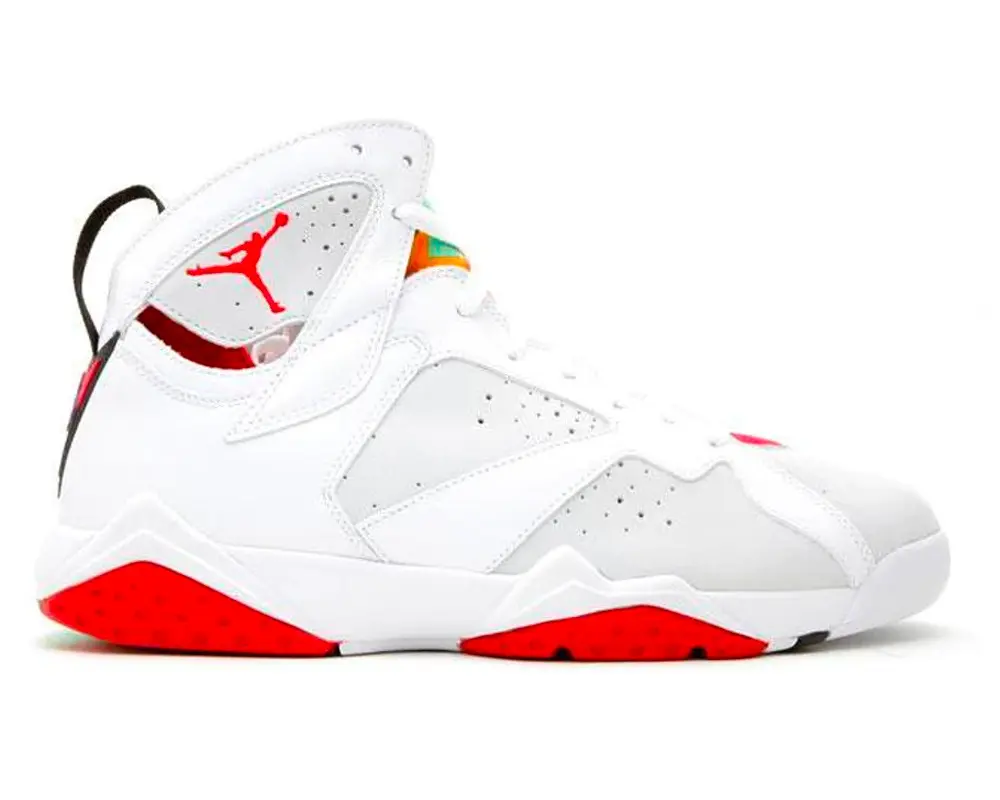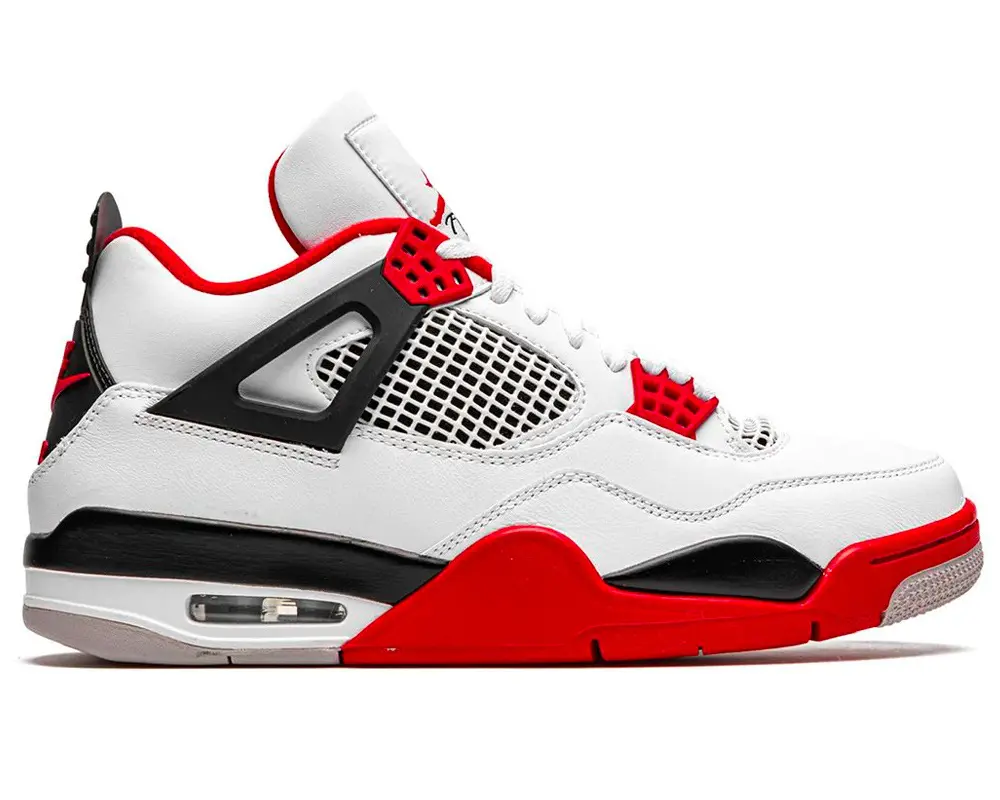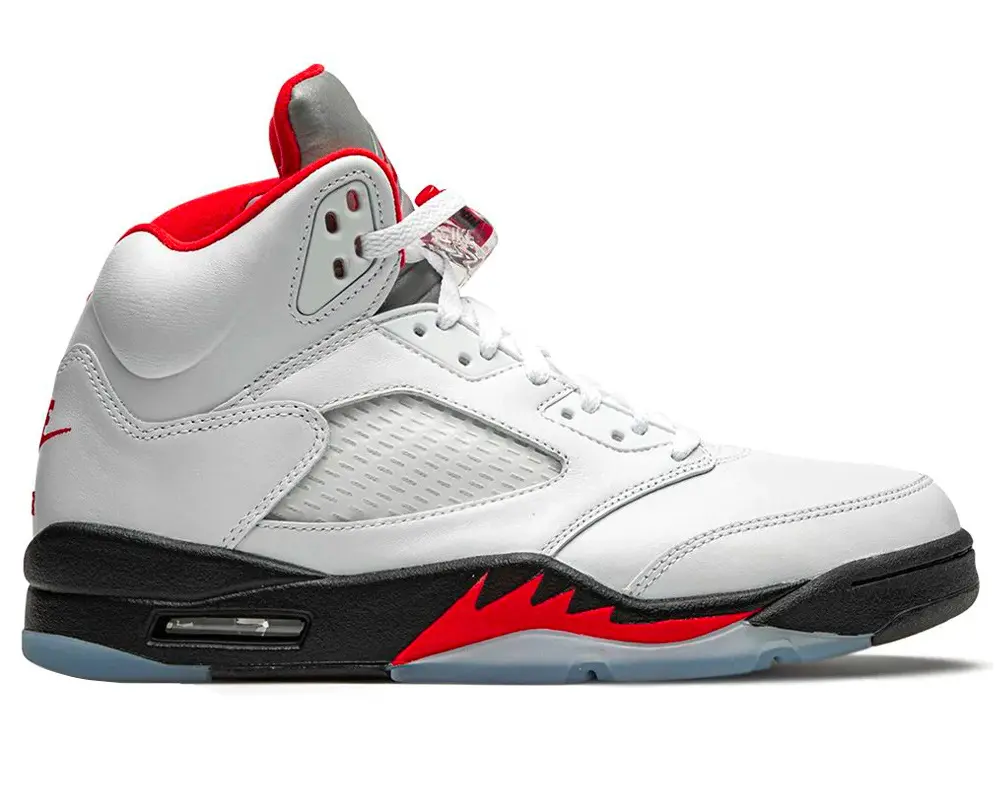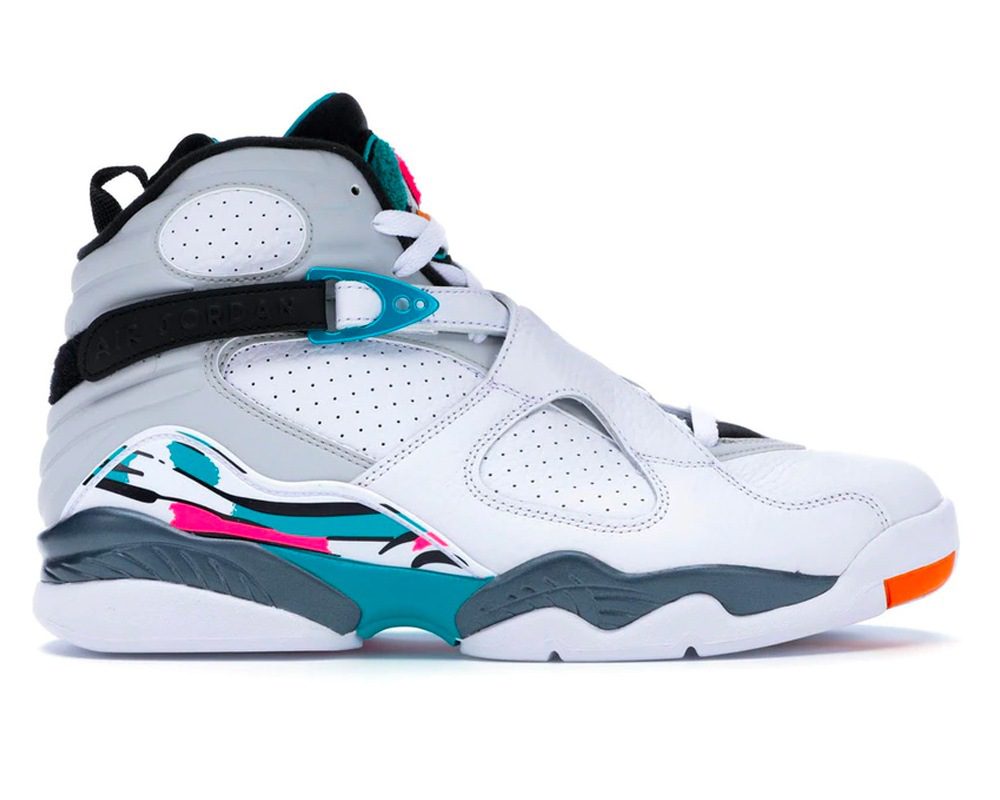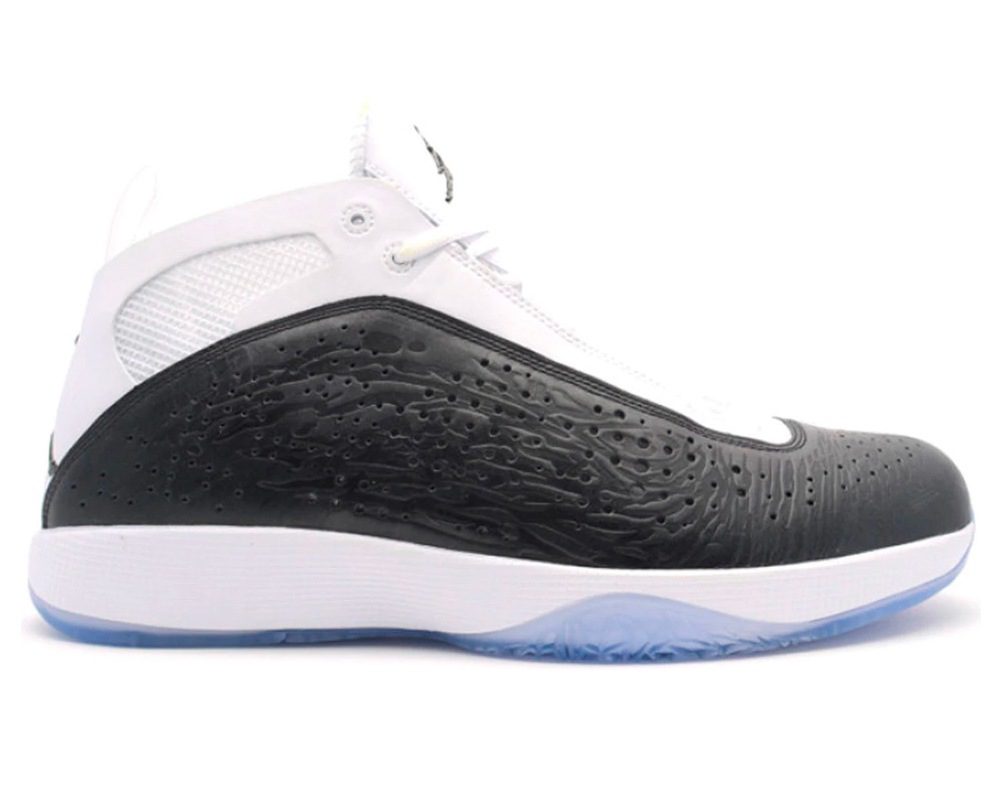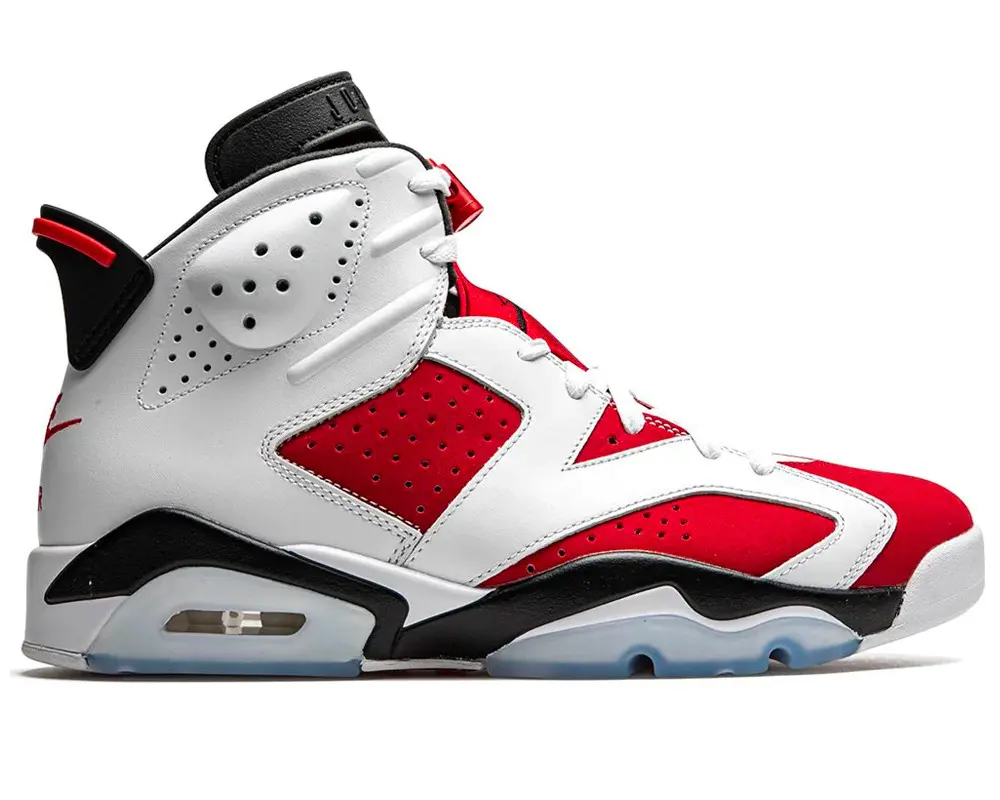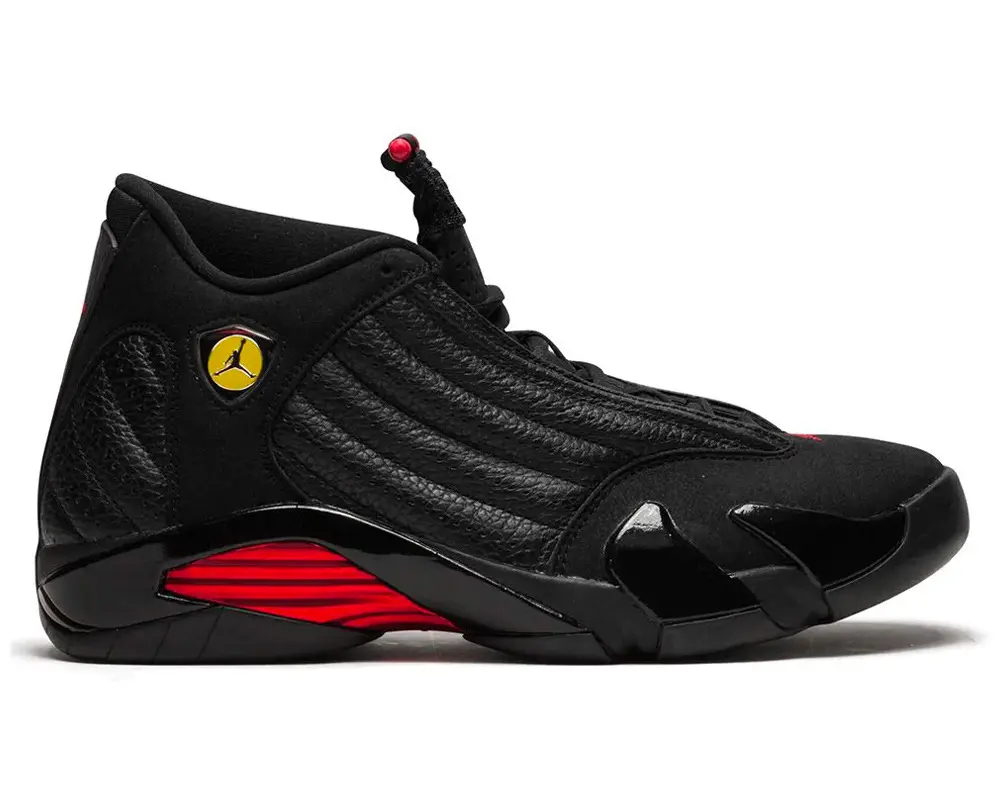Top 10 Air Jordan Sneakers Of All Time
It’s been almost 40 years since Michael Jordan’s first signature shoe set foot on the court. It was 1985, and that shoe was the Air Jordan I: a simple leather high-top with Swoosh branding to the side and a black upper with red accents. Nobody knew it at the time, but this was to be sneakers’ “one small step” moment and something that would shape the relationship between fashion and sportswear for decades to come.
Fast forward to the present day and it’s difficult to quantify the effect the Jordan brand has had on footwear, fashion and popular culture at large. Air Jordans made sneakers into highly desirable, luxury items. They brought sportswear into the mainstream and gave rise to the phenomenon we now call sneaker culture.
Today, a £100 pair of trainers is par for the course, but back in Air Jordans’ early years, those sorts of prices were unheard of, which only added to the shoes’ appeal.
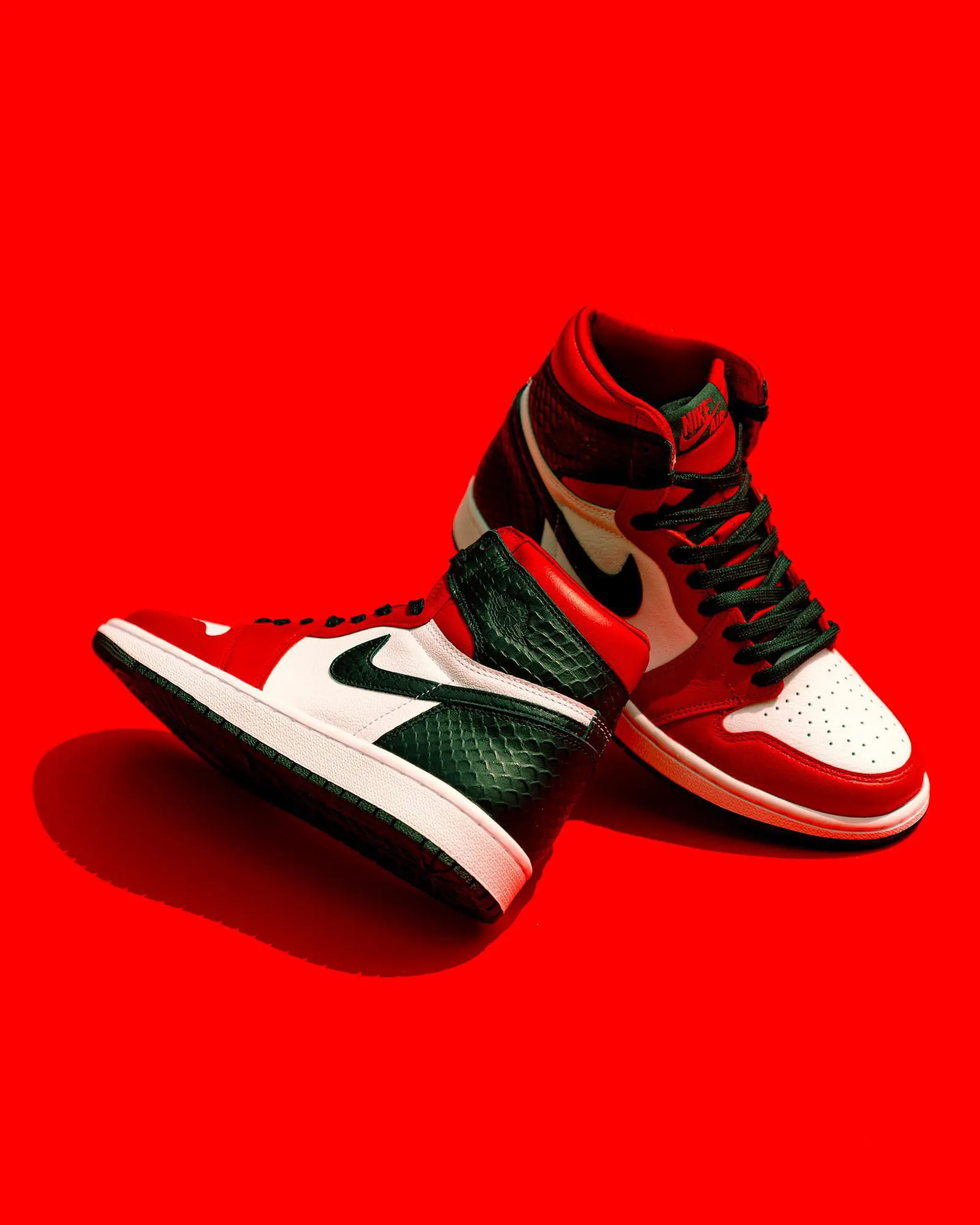
Since that first sneaker, Air Jordan has released a shoe every year like clockwork. Some have surpassed their predecessors in terms of design, cultural impact and performance, while others have fallen by the wayside. There’s also been a healthy amount of creative wackiness, and far from being timeless, each shoe serves as a sort of visual time capsule for the era in which it was designed.
There’s no shortage of great Air Jordan shoes, but we’ve narrowed it down to 10 that we feel are the brand’s most significant and iconic designs. In no particular order, here’s Ape’s edit of the best Air Jordans ever made.
Air Jordan I
The shoe that started it all. Michael Jordan’s first signature shoe with Nike is shrouded in sporting mythology. The story goes that Jordan was banned from wearing the shoes on the court as their black uppers violated NBA standards. Basketball’s governing body told MJ he’d receive a $5,000 fine for every match he continued to wear the shoes, but instead of taking them off, he kept wearing them and Nike footed the bill.
Sneaker experts argue that the shoe in question was actually the Nike Airship, a forerunner to the Air Jordan 1, but the Swoosh sticks to its version of events. Either way, the Air Jordan 1 is a sporting icon and sneaker culture’s centrepiece. Reimagined countless times by some of the biggest names in fashion and streetwear, it’s the shoe that started it all and undeniably one of the greatest sneakers of all time.
Air Jordan III
The Air Jordan I might have been the first shoe in the Air Jordan lineup, but it was two shoes later that the brand really found its visual identity. This was the first of 13 Air Jordans to be drawn up by legendary Nike footwear designer Tinker Hatfield, a man often hailed as the architect of modern sneakers. Hatfield scrapped the Swoosh, added some elephant-print accents, put an Air cushioning unit in the sole and adorned the shoe with the now iconic Jumpman logo, picturing MJ in mid-air.
Here’s the best bit. Not only did Hatfield create a blueprint for how Air Jordan shoes should look, but according to Nike founder Phil Knight, his Air Jordan III design actually stopped MJ from leaving Nike for its rival, Adidas. After the poor reception of his second pro shoe and a foot injury that put him out of action, Nike’s poster boy was ready to jump ship. However, when he was shown the Air Jordan III in a meeting in 1987, he decided to stick around for good.
Air Jordan XI
In 1995, MJ was en route to one of his most impressive years to date and Tinker Hatfield wanted to do something special to mark the occasion. He took his inspiration for the Air Jordan XI from a convertible sports car and finished the shoe with a shiny patent-leather rand.
The mixture of materials used on the XI set it apart from anything else that had been created up to that point. It was strikingly different, but fans of the brand loved it and it quickly became (and remains to this day) one of the most sought-after Air Jordan styles out there. It’s also said to be Michael Jordan’s personal favourite, and when you consider the brand is now on its 35th shoe, that really is saying something.
Air Jordan VII
Michael Jordan’s 1992 season was one of the most legendary of his career and the Air Jordan VII was the shoe that propelled him through it. It’s one of the more underrated sneakers in the line, but design-wise we feel it’s still worth shouting about.
Outside of basketball, Tinker Hatfield was busy designing some of the most iconic sneakers of the 1990s. The Air Max 1 gets the most air time (no pun intended), but the Huarache was another of his creations and the VII borrowed more than a little from it. Most notably, the neoprene bootie which features on both shoes and hugs the wearer’s foot.
Air Jordan IV
The Air Jordan III was a huge hit, which was great news for Nike but it also posed a problem for designer Tinker Hatfield. How was he supposed to follow up the most revolutionary basketball shoe of all time? In the end, he decided the best course of action was to keep the overall design the same while making a few small tweaks and adjustments here and there.
Much like the III, the IV featured the Jumpman logo to the tongue, an Air unit in the sole, textured accents (paint splatter this time) and two very similar OG colourways. However, there were some differences that make the IV stand out on its own merit. For one, the addition of the grid mesh panels and plastic lace supports lent the shoes a more utilitarian edge than their predecessor, and the mesh also made them much more breathable than most other full leather basketball sneakers of the time.
Air Jordan V
While it wasn’t radically different to the IV, the Air Jordan V did come with several notable additions that put it right up there with basketball-shoe royalty. First and foremost, it was the first shoe in the Air Jordan series to feature a translucent blue sole. This may seem like a minor detail but it’s one of the design elements that has become a signature of the Jordan brand and clear visual identifier. It could also have been a nod to another iconic shoe Hatfield designed that same year: Marty McFly’s self-lacing MAG sneakers from Back To The Future Part II.
Tinker Hatfield also took inspiration from WWII-era fighter planes. This manifested as the now-iconic shark-tooth detail on the midsole, which was a nod to the shark mouths painted on the sides of planes by the Flying Tigers.
Air Jordan VIII
The 1992-1993 season saw Michael Jordan strap on his most unusual signature basketball shoes to date. The Air Jordan VIII was, and still is, the only Jordan shoe to feature a cross-over strap on top of the laces. It’s a striking shoe that’s an unmistakable product of its era, the multicoloured panel to the side being a clear 1990s design quirk.
These shoes are iconic for another reason though. Before his first retirement, these are the kicks Jordan wore when he defeated the Hawks, Knicks, Cavs and Suns in the so-called ‘Three-Peat Championship’ season.
Air Jordan 2011
The 26th shoe in the Air Jordan series may not have been one of the most visually striking, but it had a nifty trick up its sleeve. The Air Jordan 2011 was the first Air Jordan to feature an interchangeable mid-sole, with red and blue options that each offered different properties depending on the needs of the athlete. Nike likened it to choosing the right weapon before battle. The blue and red slip-in midsoles were labelled with the words “Be Quick” and “Be Explosive” respectively, and each featured different arrangements of Air pockets to enhance performance in certain ways.
There were those who called it a gimmick, but the interchangeable mid-sole carried over into several other Air Jordan models as well as a couple of Kobe Bryant’s signature shoes too.
Air Jordan VI
Jordan wore the VI on the way to his first Championship. For the design, Tinker Hatfield took inspiration from the NBA star’s sports car, going as far as to include a “spoiler” on the back. This wasn’t just an aesthetic touch though. In fact, Jordan had complained about struggling to pull previous shoes on prior to a game and so this heel tab was the solution.
The shoe itself features a neoprene insert, clean toe box, and the five OG colourways featured a mix of leather and nubuck for the uppers.
Air Jordan XIV
This streamlined sneaker was the last shoe Jordan wore as a Chicago Bull. It was revealed to him by Hatfield during the 1998 finals, on the proviso that he kept it secret and didn’t reveal it just yet. However, Jordan liked the shoe so much that he hit the court in it almost immediately and was even wearing them when he made the famous ‘Last Shot’ to clinch his final championship.
Design-wise, the XIV took inspiration from another of Jordan’s sports cars: his Ferrari 550 M. This is most noticeable in the yellow Jumpman logo to the side, which is framed in a Ferrari-style badge.
